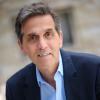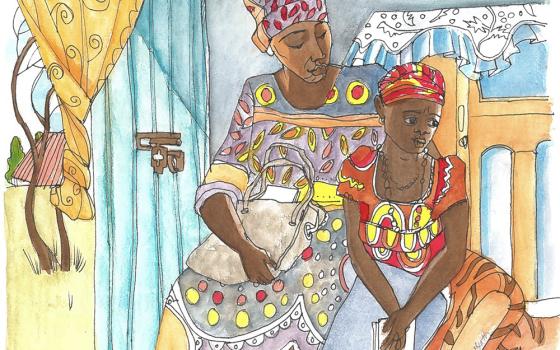I found myself near St. Patrick's Cathedral in Manhattan on Thursday and walked in. It's always an odd dissonance there: part holy space, part tourist destination, along with nearby Rockefeller Center and Times Square.
This was the day the Supreme Court announced its decision on the Affordable Care Act, and -- given New York Cardinal Timothy Dolan's outspokenness on everything President Barack Obama -- I wanted to see if there was any kind of "reaction" in the cathedral.
Along the sides of the great space, tourists wandered up and down, taking photos of the impressive stained-glass windows and stopping at one of the 12 side chapels. They darted around metal sheets and scaffolding: The cardinal has undertaken a massive repair and renovation project of the cathedral, inside and out, scrubbing off several decades of accumulated grime since the last restoration project, launched by Cardinal Francis Spellman in the early 1960s.
Restoration of former grandeur seemed to me, as I stood at the entrance, an apt symbol for what it appears the church is trying to do now: looking backward as a way of moving ahead.
Then I noticed two guards waving me forward as they opened up a velvet rope that closed off the center aisle. I stepped through and was now among fellow worshippers -- kept apart from the hum of visitors and the clicks of cameras. Up on the altar, I suddenly realized, a Mass was just finishing up. The lector read off some activities that week at the parish, and the priest began the closing prayer.
Then he stopped and remembered something. He asked everyone to pick up a card in the pews and read along with him "as we have been doing each day for several days now." On the card was printed a "Prayer for Religious Liberty." It read, in part: "Grant our leaders the wisdom to protect and promote our liberties; by your grace may we have the courage to defend them."
Soon after, the Mass was over, the worshippers (two or three dozen) filing out past the tourists and the gift shop into the mid-afternoon heat of a New York Thursday in July.
But the theme of restoration would come back to me later -- that sense of turning back to step ahead.
That night, I went to see "The Best Man" on Broadway. The play, by Gore Vidal, was first produced in 1960 and takes place during a brokered political convention, with two leading candidates (a conservative and a liberal) maneuvering to win the presidential nomination.
In one scene, the candidate's wives are together, meeting with the head of the (unidentified) party's women's group. The wife of the conservative candidate coyly brings up the liberal wife's history of working on a pro-contraceptive campaign, which sets off alarms with the women's group chief. "No, no," she says. "Mustn't talk about that. Catholics will get upset, and Catholics are the big thing this year."
The audience surrounding me didn't know whether to gasp or howl. Here is a 60-year-old play about politics that should seem as creaky and alien as a drawing room comedy of manners written in the late Victorian Age. But this line (and many others, actually) felt ripped from the headlines.
To many, 1960 was part of the Golden Age for the church in America -- the sons and daughters of Catholic immigrants were entering the social mainstream, seminaries and convents turned out religious in record numbers, and leaders from Fulton Sheen to Francis Spellman were large figures on the national stage.
But then, of course, it all went wrong. Depending on your point of view, Vatican II ruined everything because it went too far or because it was not allowed to go far enough. At the center of that debate stands Humanae Vitae and its ruling against contraception.
To church leaders today, the answer is clear, and contraception is yet again an issue ... six decades later.
The gamble here is that most American Catholics will follow the leadership backward, that people in the pews will agree with what needs to be restored and just what defines the grime that has to be washed away.



